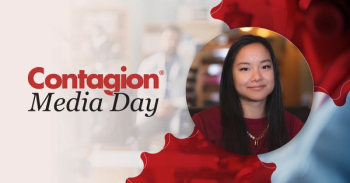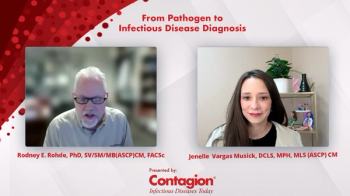
Laszlo Majoros, MD, PhD: Rezafungin's Activity Against Candida Species
At ECCMID 2019, László Majoros, MD, PhD, spoke about rezafungin’s activity against common and rare Candida species in vitro.
Rezafungin in an echinocandin that is in phase 3 development for the treatment of invasive Candida infections and candidemia. While the novel agent is reported to have excellent activity against Candida, limited data has been available on Candida species.
At the European Clinical Congress of Microbiology and Infectious Disease (
Interview transcript (modified slightly for readability):
Contagion®: Can you summarize your presentation?
Majoros: Rezafungin is a new drug in phase 3 development and exceptional pharmacokinetic properties exist. This means that, particularly, we give it once weekly and we reach high drug concentrations in the blood, in fluid, in the abdominal cavity, in internal organs. Why is it important? Because fungal pathogens exist not only in the blood but also in different body sites including the kidneys, spleen, liver and we should eradicate the infections with this drug.
The previously mentioned echinocandins may not penetrate well into different body sites including the pleural cavity, abdominal cavity, and thus they are not able to eradicate these pathogens, for example, Candida auris, the most frequently occurring species, Candida glabrata, Candida parapsilosis. An advantage of this new drug is that it will produce very high drug concentration immediately, not 1 or 2 days later, there is no need for a loading dose, for example, and for a week continuously very high drug concentration will be present. In the practice it means that immediately it starts killing the fungal pathogens thus, patients will not die, the will mortality rates will be decreased, and patient survival rate will be significantly higher due to this new antifungal drug.
Rezafungin looks like a very good antifungal agent because it is effective against not only common but uncommon Candida species as well. We work with this drug not only against common Candida species, but also against uncommon Candida species. Why is it important? Because many of uncommon Candida species are fully resistant. For example, 1 or 2 antifungal classes are non-effective against species, for this reason, we should treat these patients with maybe a different route, with a new drug in order to survive the severe disease, for example, Candida and other bacterial infections.
Contagion®: What did you observe in your research?
Majoros: Because there was no data about rezafungin activity against rather uncommon Candida species, we performed an experiment to determine the efficacy, against rare Candida species, for example, Candida guilliermondii, Candida lusitaniae, Candida kefyr, S. cerevisiae, Candida fabianii.
We did this experiment and we noticed very, very good in vitro activity of rezafungin against the rarely isolated Candida species. As I mentioned these rare isolated Candida species may produce up to 70-80% mortality rate.
It is very important that the rezafungin activity was comparable to previously discovered introduced caspofungin, micafungin, and anidulafungin. For this reason, in the future, we can use rezafungin, as well, for the treatment of invasive Candida infections not only caspofungin, micafungin, and anidulafungin.
The exceptionally good pharmacokinetics is practically life-saving. Immediately, rezafungin is able to kill the pathogen in our body and it is very important that many patients who should be in the hospital can be treated after 1- or 2-weeks treatment as outpatients. So, rezafungin is a very good drug because it is useable for outpatients and there is no need to stay in the hospital for many, many days. In these patients, we can decrease the health care-associated infections, for example. We are able to treat the patient with better clinical outcome because there is no need for staying in the hospital, and when the patient is at home health care-associated infections and other infections, will be significantly decreased. This is good for patients and for clinicians as well and it may be cost effective.
Newsletter
Stay ahead of emerging infectious disease threats with expert insights and breaking research. Subscribe now to get updates delivered straight to your inbox.






















































































































































































































































































































